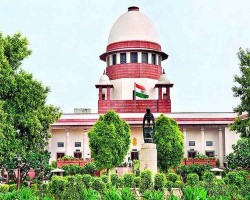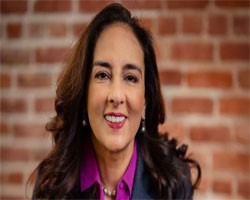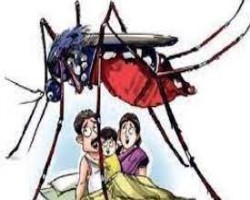UPSC Current Affairs
TABLE OF CONTENTS |
| International Relations |
|---|
|
|
|
Syria's new interim leader announced he was taking charge of the country as caretaker prime minister with the backing of the former rebels who toppled President Bashar al-Assad.
ISRAELI ADVANCES: 📍Israel's incursion in the southwest and its airstrikes create an additional security problem for the new administration, although Israel says its intervention is temporary. 📍After Assad's flight on Sunday ended more than five decades of his family's rule, Israeli troops moved into the buffer zone inside Syria established following the 1973 Middle East war. 📍Three security sources said on Tuesday the Israelis had advanced beyond the demilitarised zone. One Syrian source said they had reached the town of Qatana, several km (miles) to the east of the buffer zone and a short drive from Damascus airport. 📍Israel's Defence Minister Israel Katz said he had ordered a "sterile defensive zone" to be created in southern Syria to protect Israel from terrorism. 📍Military spokesperson Lieutenant Colonel Nadav Shoshani said troops were in the buffer zone and "a few additional points" in the vicinity, the first apparent official Israeli acknowledgement that they had moved beyond it. He said, however, that there had been no significant push into Syria. 📍Katz also said Israel's navy had destroyed Syria's fleet. 📍Regional security sources and officers within the defunct Syrian army said Tuesday's Israeli airstrikes had hit military installations and air bases across Syria and destroyed dozens of helicopters and jets. 📍Turkey, Egypt, Qatar and Saudi Arabia condemned the Israeli incursion. |
|
|
|
IN SHORT:
Mohamed al-Bashir term to end on March 1, 2025 He led the Salvation Government previously Bashar al-Assad ousted from power; provided asylum by Russia |
| National |
|
|
|
Why in the news?
Multiple parties moved the Supreme Court on the eve of a Special Bench hearing petitions challenging the validity of the Places of Worship Act, 1991, which preserves the character of religious places as they existed on August 15, 1947. Why was the Places of Worship Act enacted? The Places of Worship Act was passed by the Parliament and enacted into law in 1991 during the peak of the Ram Janmabhoomi movement. The Babri Masjid was still standing when the Act was introduced by Prime Minister P V Narasimha Rao’s Congress administration. About Places of Worship (Special Provisions) Act, 1991: It is described as an Act to prohibit conversion of any place of worship and to provide for the maintenance of the religious character of any place of worship. The Act declares that the religious character of a place of worship shall continue to be the same as it was on August 15, 1947. It says that no person shall convert any place of worship of any religious denomination into one of a different denomination or section. Exemption: The disputed site at Ayodhya was exempted from the Act. Due to this exemption, the trial in the Ayodhya case proceeded even after the enforcement of this law. Any place of worship which is an ancient and historical monument, or an archaeological site covered by the Ancient Monuments and Archaeological Sites and Remains Act, 1958. A suit that has been finally settled or disposed of. Any dispute that has been settled by the parties or conversion of any place that took place by acquiescence before the Act commenced. Criticism: The law has been challenged on the ground that it bars judicial review, which is a basic feature of the Constitution. It imposes an “arbitrary irrational retrospective cutoff date,” and abridges the right to religion of Hindus, Jains, Buddhists, and Sikhs. Way forward: The major issues put forward concerning the Places of Worship Act, of 1991 are: Whether Sections 2, 3, and 4 of the Places of Worship Act 1991, violate Articles 14 and 15 and the guarantee of equality in the Constitution? Whether Sections 2, 3, and 4 violate Articles 25, 26, and 29 and the basic feature of secularism in the Constitution? Whether temples ‘destroyed by invaders’ remain temples under Hindu and Islamic personal law? Ensure the Act does not restrict judicial review, preserving the judiciary's role in upholding constitutional rights. Strike a balance between preserving religious character and respecting the rights of different communities. |
| Sports |
|
|
|
Why in the news?
The Union Territory of Ladakh will host the ice events at the Khelo India Winter Games (KIWG) 2025 from January 23 to 27, while the UT of Jammu & Kashmir will host the snow events from February 22 to 25. Key Takeaways: Having started the Khelo India Winter Games in 2020, almost 1000 athletes, including 306 women, took part in the inaugural edition. The participation has increased over the years as more than 1350 athletes in 2021 and 1500-plus in 2022 highlighted the growing attraction of the Games in J&K. The Winter Games will flag-off the Khelo India season with the Youth & Para Games scheduled in Bihar in April next year. The Khelo India University games are also on the cards. The 2024 iteration of KIWG saw participation of 1200-plus participants including more than 700 athletes, 141 support staff, 113 technical officials, 250-plus volunteer and sports specific volunteers and a total of 136 medals at stake. The 2024 edition was also the first time Ministry of Youth Affairs and Sports, Government of India along with Sports Authority of India managed the technical conduct of the Games in association with the National Sports Federations and Indian Olympic Association. Second KIWG in Ladakh after 2024 success: This will be the second year running that UT Ladakh will host a portion of the Khelo India Winter Games. Before the 2024 edition, J&K used to host all the events. Leh successfully hosted ice events like skating and hockey in February 2024. Gulmarg, like always, hosted the snow events like skiing and snowboarding. |
|
|
|
IN SHORT:
The Union Territory of Ladakh will host the ice events at the Khelo India Winter Games (KIWG) 2025 from January 23 to 27. The UT of Jammu & Kashmir will host the snow events from February 22 to 25. The Khelo India Winter Games started in 2020. |
| Persons in News |
|
|
|
US President-elect Donald Trump on 9th December named Indian American lawyer Harmeet K Dhillon as the Assistant Attorney General for Civil Rights at the Department of Justice. Dhillon is the fourth Indian-American to be nominated in the Trump 2.0 Cabinet after Dr Jay Bhattacharya (National Institutes of Health (NIH)), Vivek Ramaswamy (Department of Government Efficiency (DOGE)) and Kashyap 'Kash' Patel (Director of FBI).
ALL ABOUT HARMEET DHILLON: 📍Born on April 2, 1969, in Chandigarh, Dhillon moved to the US with her family at the age of two and grew up in a Sikh household in rural North Carolina. She later moved to New York City. 📍Dhillon graduated from Dartmouth College with a degree in Classical Studies and English, and then earned her Juris Doctor from the University of Virginia School of Law, where she was a member of the Editorial Board of the Virginia Law Review. 📍She began her career as a law clerk for Judge Paul V Niemeyer of the US Court of Appeals for the Fourth Circuit and later worked in the Constitutional Torts Section of the Department of Justice, Civil Division. She then joined the prestigious law firm Gibson, Dunn & Crutcher, where she gained experience in complex civil litigation, constitutional law, and appellate practice. 📍After a decade at international law firms in New York, London, Silicon Valley, and San Francisco, Dhillon founded her own law firm, Dhillon Law Group, in 2006. 📍Dhillon specialises in several key areas of law, including commercial litigation, employment law, First Amendment rights and election law. Her practice also encompasses securities, entertainment, employment discrimination and civil rights matters. 📍She has a niche practice of representing clients in election and campaign law, including general compliance, ethics representation and intellectual property issues related to campaign communications. IN SHORT: Harmeet K Dhillon nominated Assistant Attorney General for Civil Rights Trump praised her for challenging tech censorship and defending religious freedom Born in Chandigarh, Dhillon founded Dhillon Law Group in 2006 |
| Reports And Indices |
|
|
|
Why in the news?
INDIA HAS finally managed to control malaria, reduce mortality and get out of the High-Burden-High-Impact(HBHI) group of endemic countries, according to the World Malaria Report 2024 released on 11th December 2024. India reported significant reduction in malaria caseload: India reduced its malaria caseload by 69% from 6.4 million in 2017 to 2 million in 2023, and during the same period, the estimated malaria deaths fell 69% from 11,100 to 3,500. “In the period 2022-2023, four countries achieved reductions in their malaria caseload — Bangladesh (-9.2%), India (-9.6%), Indonesia (-5.7%) and Nepal (-58.3%). Meanwhile, three countries saw case increases — Democratic People’s Republic of Korea (+47.9%), Thailand (+46.4%) and Myanmar (45.1%). In 2023, both Timor-Leste and Bhutan reported zero indigenous cases of malaria. With the exception of Myanmar and Thailand, all countries reported either a decline in their malaria mortality rate or zero malaria deaths. A reduction in case incidence of 87% was achieved between 2000 and 2023, from 17.7 to 2.3 per 1000 population at risk. What worked for India? According to Dr Rajni Kant Srivastava, Indian Council of Medical Research (ICMR), Chair for Disease Elimination, this was possible due to the Artemisinin-based combination therapy (ACT) and long-lasting insecticidal nets (LLIN). The artemisinin first kills the majority of malaria parasites by attacking a certain protein, and the partner drug clears the small number of parasites that remain. When mosquitoes try to bite a person sleeping under a LLIN, they are not only blocked by the net but also killed by the insecticide coating. According to the CDC, if more than half of a community uses an insecticide treated net, the number of mosquitoes in the area and their lifespan will be reduced. Effective monitoring and evaluation helped in case management. Global Malaria Overview: Meanwhile, new data from the WHO revealed that an estimated 2.2 billion cases of malaria and 12.7 million deaths have been averted since 2000, but the disease remains a serious global health threat, particularly in the WHO African Region. According to WHO’s latest World malaria report, there were an estimated 263 million cases and 597,000 malaria deaths worldwide in 2023. This represents about 11 million more cases in 2023 compared to 2022, and nearly the same number of deaths. Approximately 95% of the deaths occurred in the WHO African Region, where many at risk still lack access to the services they need to prevent, detect and treat the disease. 44 countries and one territory declared malaria-free: As of November 2024, 44 countries and one territory had been certified malaria-free by WHO, and many more are steadily progressing towards the goal. Of the 83 malaria-endemic countries, 25 countries now report fewer than 10 cases of malaria a year, an increase from 4 countries in 2000. WHO malaria elimination target: The global target for malaria eradication is to reduce global malaria incidence and mortality rates by at least 90% by 2030. The World Health Organization (WHO) has set a goal to eliminate malaria in at least 30 countries by 2030. India has also set a target to eliminate malaria by 2030: The National Framework for Malaria Elimination (NFME) 2016-2030 document was launched in 2016 The goal is to eliminate malaria throughout the entire country and maintain malaria free status in areas where transmission has been interrupted . What is Malaria? Malaria is a life-threatening mosquito borne blood disease caused by plasmodium parasites. There are 5 Plasmodium parasite species that cause malaria in humans and 2 of these species – P. falciparum and P. vivax – pose the greatest threat. Malaria is predominantly found in the tropical and subtropical areas of Africa, South America as well as Asia. Malaria is spread by the bite of an infected female Anopheles mosquito. The mosquito becomes infected after biting an infected person. The malaria parasites then enter the bloodstream of the next person the mosquito bites. The parasites travel to the liver, mature, and then infect red blood cells. Symptoms of malaria include fever and flu-like illness, including shaking chills, headache, muscle aches, and tiredness. Notably, malaria is both preventable and curable. What are the Initiatives Related to Malaria? Global: WHO's Global Malaria Program(GMP): The WHO's GMP is responsible for coordinating WHO's global efforts to control and eliminate malaria. Its work is guided by the "Global technical strategy for malaria 2016–2030" adopted by the World Health Assembly in May 2015 and updated in 2021. The strategy sets the target of reducing global malaria incidence and mortality rates by at least 90% by 2030. Malaria Elimination Initiative: Spearheaded by the Bill and Melinda Gates Foundation, this initiative focuses on eradicating malaria through diverse strategies such as treatment accessibility, mosquito population reduction, and technology development. E-2025 Initiative: The WHO launched the E-2025 initiative in 2021. The initiative aims to stop the transmission of malaria in 25 countries by 2025. The WHO has identified 25 countries that have the potential to eradicate malaria by 2025. India: National Framework for Malaria Elimination 2016-2030: Aligned with WHO's strategy, aims to eliminate malaria across India by 2030 and maintain malaria-free zones. National Vector-Borne Disease Control Programme: Addresses various vector-borne diseases, including malaria, through prevention and control measures. National Malaria Control Programme (NMCP): To combat devastating effects of Malaria, the NMCP was launched in 1953 built around three key activities - insecticidal residual spray (IRS) with DDT; monitoring and surveillance of cases; and treatment of patients. High Burden to High Impact (HBHI) Initiative: Initiated in four states (West Bengal, Jharkhand, Chhattisgarh, and Madhya Pradesh) in 2019, focusing on malaria reduction through insecticidal net distribution. Malaria Elimination Research Alliance-India (MERA-India): Established by the Indian Council of Medical Research (ICMR), collaborates with partners on malaria control research. |
|
|
|
Useful information for all competitive exams:
World Health Organization (WHO): The World Health Organization (WHO) is a specialized agency of the United Nations responsible for global public health. Formation: 7 April 1948 Type: United Nations specialized agency Headquarters: Geneva, Switzerland (Tedros was born in Asmara, Ethiopia (now in Eritrea) Director-General(8th): Tedros Adhanom Ghebreyesus Parent organization: United Nations Economic and Social Council |
|
<< 11-Dec-24
|
|
|




